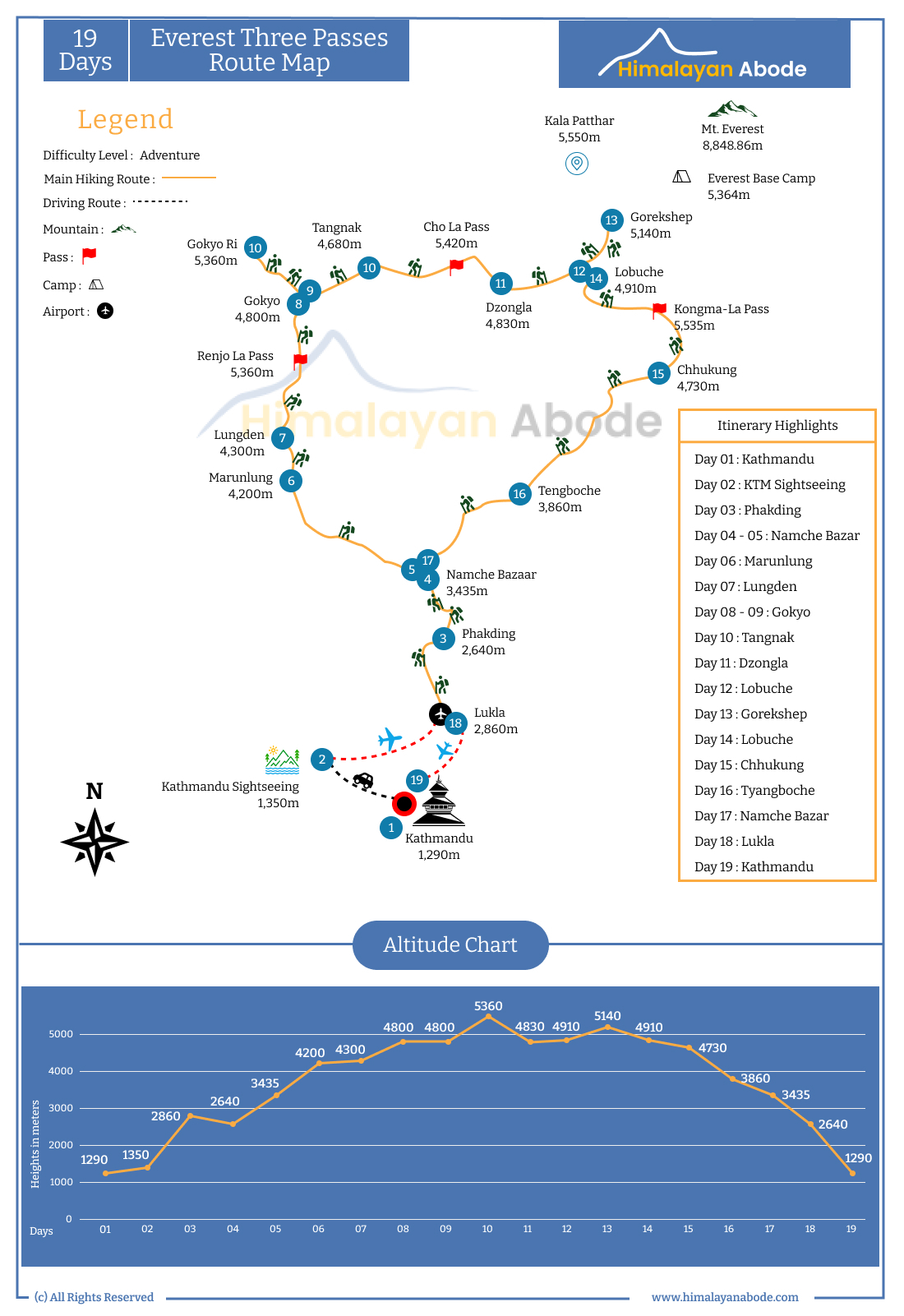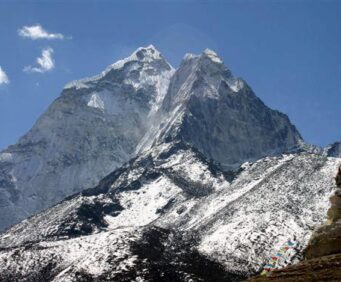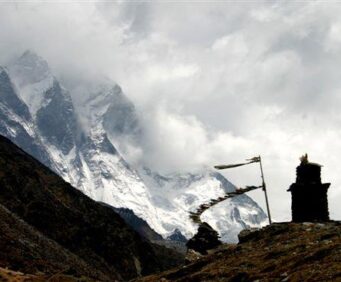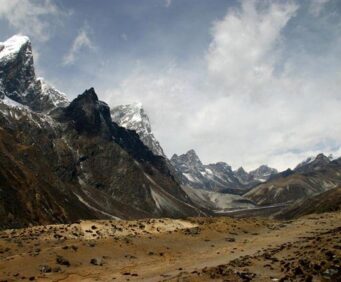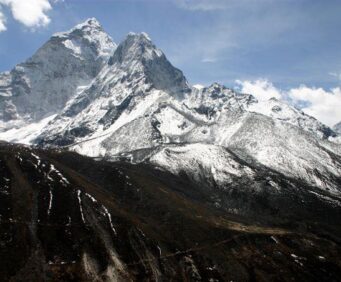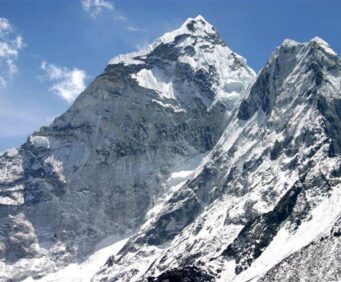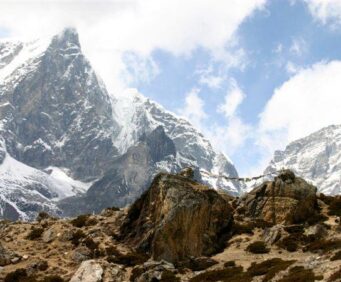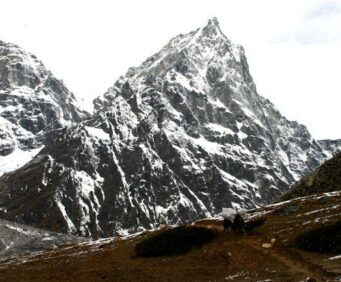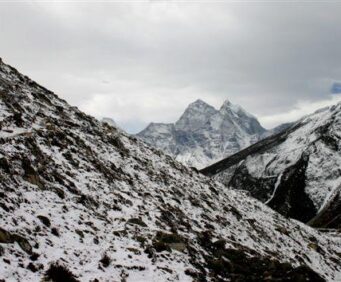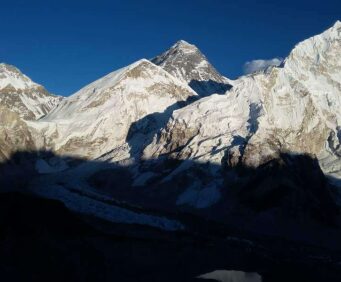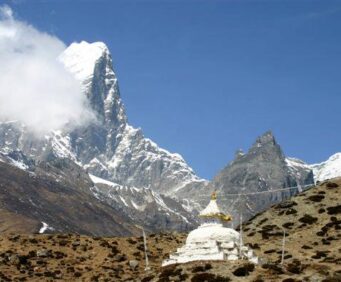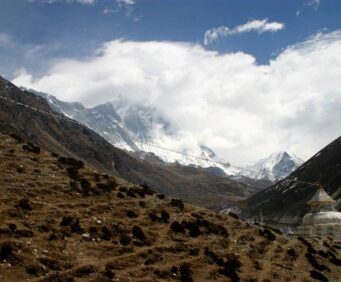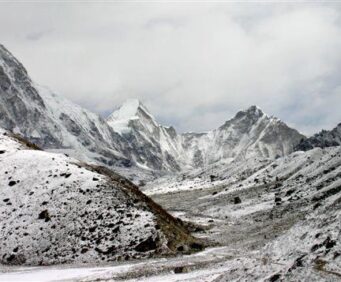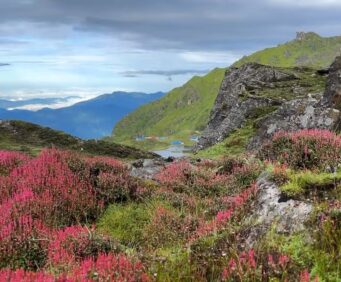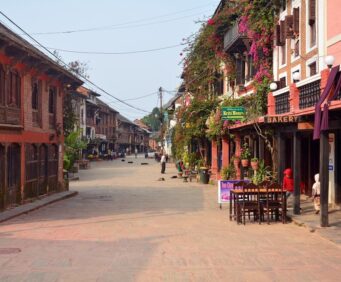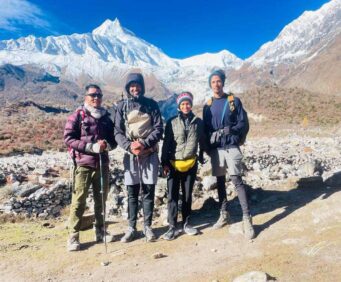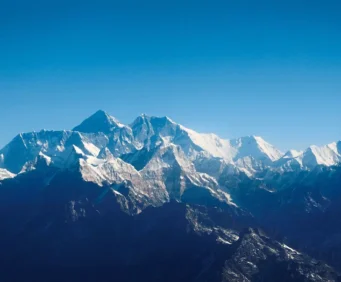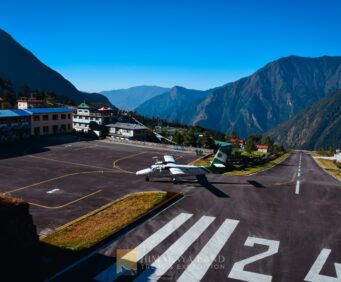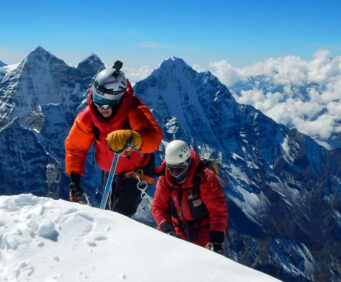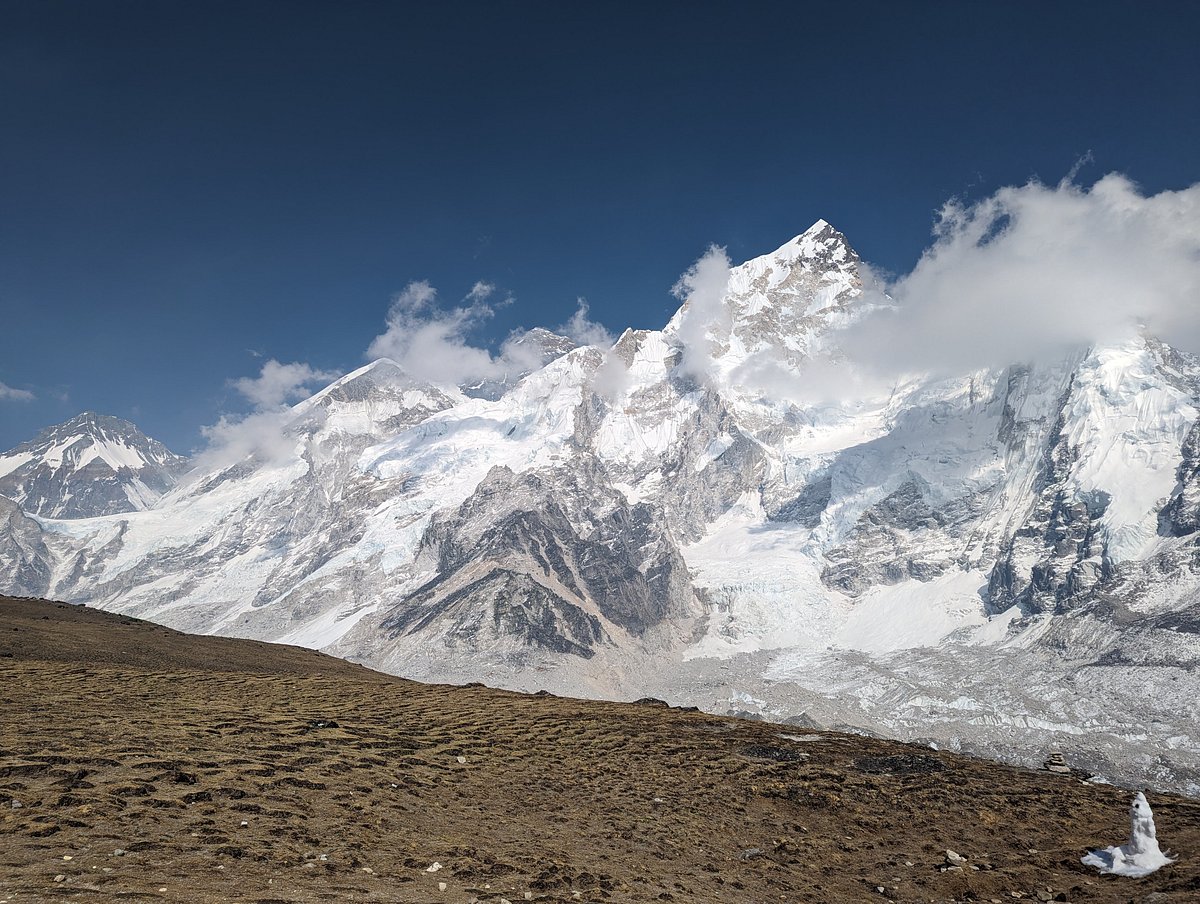
Everest Three Passes
Overview
The Everest Three Pass trek, the combination of three popular passes Renjo La Pass, Chola Pass, and Kongma La Pass is called the Everest Three Pass trek on this trek, you can see most of the beautiful parts of the Everest region along with the highest passes. GokyoRi, Chola Pass, and Everest Kalapathar are the prime attractions of this trek.
The Very Popular Three High Passes Trek in the Everest area Starts at Lukla and goes through the Dudh Koshi valley which climbs up to the Sherpa Capital of Namche, it’s a junction for Trekkers, the local Sherpa and Expedition’s route to the mighty Mt. Everest. All along the Part of this trail friendly Sherpa people, Picturesque villages, a great variety of cultures and traditions, Colorful festivals, and monasteries.
Three Passes Trek in Everest Region
We ascend to Lungden for the Renjo-La pass (5,360m). Renjo la pass provides a lifetime memory of Panoramic views of the Everest and other Himalayan ranges. The Renjo-La Pass route is off the usual beaten track. An excursion to the fourth and fifth lakes would be an extra attraction in Gokyo Valley from where the views are excellent. The Ngozumpa Glacier is the largest in the Nepal Himalayas.
The Gokyo Ri (5,330m) is considered as the best viewpoint in the entire Everest Region.
After exploring this imaging place, we crossed over the Chola-La pass (5,420m) to reach Everest Base Camp. We also have an opportunity to hike up to Kalapatthar (5,550m,) (approx. 3 hrs from Gorakshep) for a close view of Mt. Everest and Everest Base Camp (5,364m,) to see Khumbu Icefall.
Kongma-La Pass (5,535m) is the highest pass in these three passes. The views are excellent from the top of Kongma La. After the fantastic view from the Kongma-La, the trail leads down to Dingboche, and from where we have options either to walk up to Chhukung – Island Peak or walk down to Tengboche and continue the trek down to Lukla.
Everest Three ( 3) Pass Trekking Highlights
- Trekking across the three major High Passes such as the Renjo La Pass, the Cho La Pass, and the Khogma La Pass.
- Trek to the remote and untouched area of the Everest region.
- Gorgeous views of the mountain range such as Mt. Everest, Mt. Lhotse, Mt. Ama Dablam, Mt. Nuptse, Mt. Thamserku, and many more.
- Exploration of the Himalayan Sherpa Community.
- Visit Everest Base Camp and climb Kala Patthar.
Best Time for Everest Three Passes Trekking
The Everest Three High Pass Trekking can be done all around the year. But it’s better to trek the Everest 3 High Pass in the Autumn and Spring Seasons.
Autumn (September, October, November)
Autumn is the festive Season for Trekking for Trekkers from all around the world. The weather Conditions in the month of September, October, and November are mostly suitable for trekking the Everest 3 High Pass.
Autumn is one of the Peak Seasons in Nepal for trekking. The temperature during this season is quite fine neither hot nor Cold. If you wish to trek the Everest 3 High Pass in autumn, you can also explore some of the major festivals in Nepal which are observed in autumn.
Spring (March, April, May)
Spring is one of the best times of the year when beautiful flowers are blooming and new leaves start to grow. The whole environment becomes green which gives you fresh air and Pleases your eyes.
During Spring, Nepal looks even more beautiful in Nature. You will have Clearer scenic mountain views. The temperature and weather condition of the Everest Region is also favorable.
You may expect some light rainfall in late May. But, don’t worry, the view you get to explore in the next morning is Splendid.
Everest Three Passes Trekking Difficulty
Everest 3 High Pass Trek is an adventurous trek as you have to climb such as Renjo La Pass, Cho La Pass, and Kongma La Pass. These passes are one of the most challenging and physically demanding parts of the Everest region
As you trek to a higher altitude, You might have some difficulty in breathing. The amount of Oxygen becomes thinner as you walk up to a higher altitude, so you may also face Acute Mountain Sickness.
The difficulty increases if you trek during the monsoon season. During the monsoon, there are heavy rainfalls which makes the trail muddy and Slippery. You need to be careful with your Steps. Therefore, it is best to avoid trekking there in the Monsoon if you are a beginner. If you are a well-experienced trekker, then you are sure to enjoy any season.
Similarly, during the winter, the Mount Everest area is precisely enclosed with snow. it may cause difficulty in walking and passing the trails.
Brief Itinerary:
Day 01: Arrival in Kathmandu (1350m)
Day 02:Sightseeing in Kathmandu Valley and preparation of the trek
Day 03: Kathmandu to Lukla flight and trek to Phakding(2640m)
Day 04: Phakding to Namche Bazaar (3435m)
Day 05: At Namche for acclimatization
Day 06: Thame to Marunlung 4200m
Day 07: Marlung to Lunden 4300m
Day 08: Lungden to Renjo-la pass 5360m, and trek to Gokyo 4800m
Day 09: Morning hike to Gokyo Ri and return back to Gokyo
Day 10: Gokyo Ri and trek to Tangnak
Day 11: Tangnak to Cholapass and trek to Dzongla
Day 12: Dzongla to Lobuche(4910m)
.Day 13: Lobuche to Gorekshep(5140
Day 14: Gorekshep to Lobuche (4250m)
Day 15: Lobuche to Kongma-La 5535m Pass and trek down to Chhukung 4730m
Day 16: Chhukung to Tyangboche 3860m
Day 17: Tyangboche to Namche Bazaar
Day 18: Namche to Lukla
Day 19: Fly back to Kathmandu
Day20: Departure to Airport
Itinerary
Day 01Arrival in Kathmandu (1350m)
You will be picked up by our airport representative and transferred to the hotel. You can have refreshment at the hotel and explore around city.
Day 02Sightseeing in Kathmandu Valley and preparation of the trek
Today, we will drive you to Bhaktapur for sightseeing. It is one of the oldest heritage site of Kathmandu valley where you can see the ancient Bhaktapur Durbar Square and others old temple as well. After that you will be taken to BoudhanathStupa which is the most popular and huge Buddhist temple of Nepal. Having finished it, we will drive you to Hotel and prepare for
Day 03Kathmandu to Lukla flight and trek to Phakding(2640m)
Today we fly to Lukla which takes around 25 minutes. Lukla is the entrance point for this trek where we take short break for tea. Then we will continue the journey to Phakding which takes about 4 hours and stay overnight there.
Day 04Phakding to Namche Bazaar (3435m)
From Phakding the trail starts with the beautiful scenery of waterfalls along with the magnificent view of Thamserkuhimal then crosses long suspension bridges several time. If the weather is clear, you can see the Mt.Everest as well while ascending to Namche.It takes around 7 hours from Phakding to Namche Bazaar.
Day 05At Namche for acclimatization
you have whole day free in Namche Bazaar for acclimatization. You can visit Sherpa museum and army camp to see the Everest view along with detail information for flora and fauna that can be found in this region. After that, we come back to the hotel and will spend the time by wandering around Namche Bazaar.
Day 06Thame to Marunlung 4200m
From Thame, the way slowly climb up and trek to Marlung. On the way to it, we can see the nice view of snow-capped mountain and the way to Tibet called Nangpa La pass which is taken the main way for trading between Nepal and Tibet. We stay overnight at a lodge.
Day 07Marlung to Lunden 4300m
After having spent a night there, we continue our journey to Lunden which takes around 4/5 hours. Today we can see the same view like yesterday and along with more mountain view. At the end of the day, we will get to Lunden and spend a night there.
Day 08 Lungden to Renjo-la pass 5360m, and trek to Gokyo 4800m
Today is the hardest day due to Renjo La Pass 5360m. From here the way slowly climbs up and crosses the high pass called Renjo La Pass. You can see good view of montains from the top then we descend down and finally arrive at GokyoLake where we spend a night at lodge.
Day 09 Rest day at Gokyo
You have full day free today and if you want, you can explore the glacier and round Gokyo Lake and take rest and enjoy.
Day 10Gokyo Ri and trek to Tangnak
you can trek to Gokyo Peak which start early in the morning. The summit offers the extravagant vista of Cho You, Everest, Lhotse and Makalu. While climbing down you can enjoy the view of Gokyo Lake. After that we continue our journey to Tangnak which takes around 4 hours and spend a night there.
Day 11Tangnak to Cholapass and trek to Dzongla
After having spent a wonderful night at Tangnak, we continue our journey to Dzongla. From here the trail gently climbs up about 3 hours then denscends through a pasture and arrives at the bottom of Cholas pass. From here the route goes through a rocky trail and ascends up to Chola pass with the view of Gokyo valley along with snow capped mountains. As you pass the Chola, the trail climbs down till Dzongla where we spend a night. It takes about 8 hour approximately.
Day 12 Dzongla to Lobuche(4910m)
One of the relaxed days is from Dzongla to Lobuche due to the magnificent views of Everest, Pumori and easy walking. Today, after breakfast, the way goes through yak pasture and all the way is flat till Lobuche which takes about 3 hours. We stay a night there.
Day 13Lobuche to Gorekshep(5140m)
Lobuche is a small place where only a few lodges are available. The way is flat at the beginning but later it goes through rocky landslide and sometime you may feel exhausted due to its altitude. We go directly to Gorekshep for lunch which takes approximately 5 hours.
Day 14 Gorekshep to Lobuche (4250m)
Gorekshep is the last destination of this trek where we spend a night. On the next day, we climb up to Kalapathar which may takes about 4 hours. Kalapathar is the popular view point from where you can see the Mt. Everest, Lhotse, Pumori, the Khumbu ice fall and sunrise.We will descend down to Lobuche and stay overnight there.
Day 15LobuchetoKongma-La 5535m Pass and trek down to Chhukung 4730m
From Lobuche, we trek to Kongma La pass 5535m. There is no any lodge on the way to it and you have to take pack lunch. After Kongma La pass, we will descend down to Chhukung which takes around 10 hours and stay overnight at a lodge.
Day 16Chhukung to Tyangboche 3860m
Today, we will continue our journey back to Tyangbuche which takes around 5/6 hours. On the way to Tyangboche, you can see the wonderful scenery of Mt. Everest, Lhotse, Amadaplam and the khumbu valley. We stay a night at Tyangboche at lodge.
Day 17Tyangboche to Namche Bazaar
The way descends directly to Pungi Tanga and crosses a long suspension bridge. After that the trial gently ascends to Kyangjuma and finally arrives at Namche Bazaar where we spend a night. It takes about 6 hours from Tyangboche to Namche Baxzaar.
Day 18Namche to Lukla
Namche is a beautiful city of Khumbu region from where we descend down to Dudhkoshi River, cross the suspension bridge several times. We follow the same route to Lukla which takes around 7 hours. By the evening we will arrive at Lukla and sleep a night there.
Day 19 Fly back to Kathmandu
we will fly early in the morning from Lukla to Kathmandu with the magnificent views of Kongde Himal, Mt.Everest along with the entire Khumbu and langtang ranges. We will be picked up by the airport representative and transferred to the hotel.
Day 20Free Day
Today is whole day free and you can do shopping and packing for your final departure. By the evening, we will take you to the Nepali Chulo for farewell dinner and then drop to the hotel.
Day 21Final airport drop
The driver will drop you to the airport for your final departure.
Not satisfied with this itinerary?
Are you interested in planning a customized trip that suits you?
Includes/Excludes
What's included?
- Arrival and departure transportation
- Hotel in Kathmandu with breakfast
- Kathmandu to Lukla/kathmandu flight tickets
- All necessary paper work and permits (Everest National park and TIMS )
- Trekking poles with company T-shirt
- An experienced English-speaking Govt. registered trekking guide and local porters to carry luggage (2 trekkers: 1 porter)
- Guide and porter salaries, insurance, equipment, transport, food and accommodations
- Foods (Breakfast, Lunch and Dinner) with tea or coffee during the trek
- All accommodation during the trek
What's excluded?
- Kathmandu city tour guide and entrance fees
- Lunch and dinner in Kathmandu
- Deserts (cakes, bakes and pies)
- Mineral Water
- Boiled Water
- Electronic device re- charge
- Hot shower
- Personal Expenses
- Wi-fi
- Travel Insurance and evacuations insurance
- Tips for guide and porters
Useful Info
Required equipments and useful tips for your Trekking/ Hiking Tours:
The Hiking /Trekking generally goes through the high Himalayan passes, it may covers with full of snow so, we advise you to accompany a porter to carry your necessary stuffs. The porter usually carries 18 kgs of your luggage.We also expect you to carry a regular backpack for your valuables and required goods.
We as a travel operator suggest you to bring the basic clothing and accessories to the trek and the remaining you can just leave/store at Himalayan Abode Trekking or at your Hotel in Kathmandu/Pokhara for free. Here are the basic list of usual equipments regarding your Trekking/ Hiking duration.
Sun hat or Scarf
- Winter hat/ Insulating hat/ Wide-brimmed hat
- Headlight with an extra supplement batteries
- Sunscreen
- Sunglass with UV protection
- Face/body wipes
- Lightweight gloves
- Heavyweight winter gloves
Hiking shirts /Long-sleeved shirt
Rain jacket or Rain Coat
- Fleece jacket
- Lightweight cotton pants
- T-Shirt ( Lightweight wool)
- Polypropylene underwear
- Down jacket (available on hire in Kathmandu/ Pokhara)
- Sweater
- Hiking Boots
- Thick wool socks (bring an extra pair of thick light socks)
Thermal bottle
- Water sterilization tablets or liquids
- Trekking/Hiking pole
- Sleeping bag (-15 is recommended in high altitude trekking)
- Towel
- Toothbrush
- Toothpaste
- Deodorant floss
- Biodegradable bar soap
- First aid kit etc.
FAQs
1.WHERE IS IT LOCATED THE EVEREST THREE PASS TREK?
The Everest Three Pass is Located in the renowned Everest Region.
